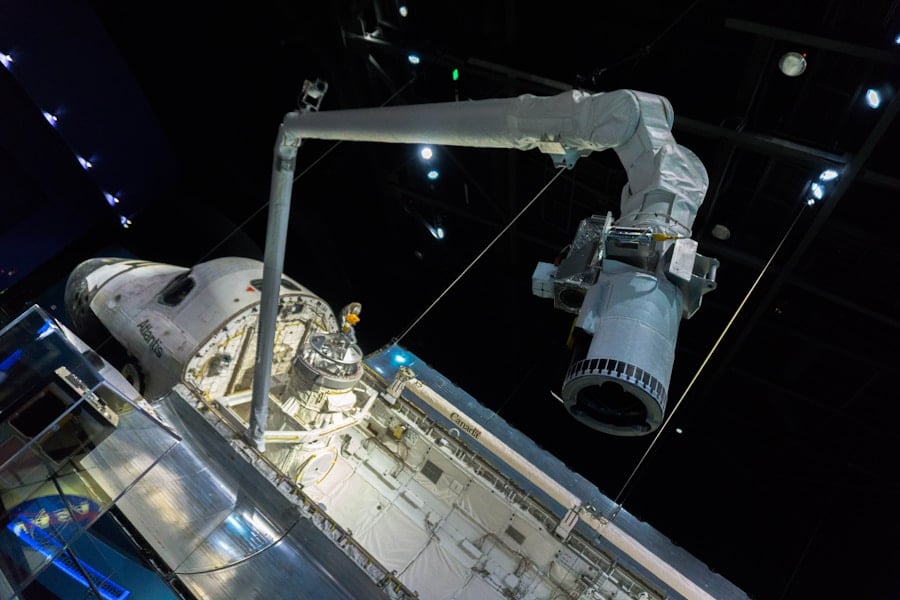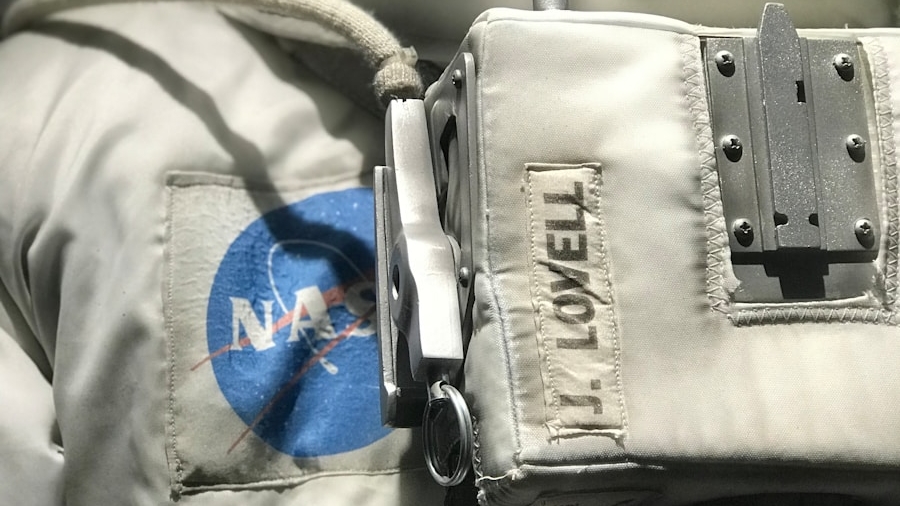The integration of artificial intelligence (AI) into space robotics represents a transformative leap in how we explore and utilize outer space. As humanity’s ambitions extend beyond Earth, the need for autonomous systems capable of performing complex tasks in the harsh environment of space has become increasingly critical. Space robotics, which encompasses a range of robotic systems designed for tasks such as satellite servicing, planetary exploration, and space station maintenance, is evolving rapidly with the infusion of AI technologies.
These advancements not only enhance the capabilities of robotic systems but also enable them to operate with greater autonomy, efficiency, and adaptability. AI in space robotics is not merely an enhancement; it is a necessity driven by the unique challenges posed by the space environment. The vast distances involved in space missions often preclude real-time human intervention, necessitating robots that can make decisions independently.
For instance, the International Space Station (ISS) relies on robotic systems like the Canadarm2 and Dextre for maintenance and repair tasks. As missions become more ambitious—such as those aimed at Mars colonization or asteroid mining—the role of AI will be pivotal in ensuring that these robotic systems can perform repairs and maintenance autonomously, thereby reducing the risk to human astronauts and increasing mission success rates.
Key Takeaways
- AI plays a crucial role in space robotics by enabling autonomous decision-making and problem-solving capabilities.
- Current challenges in on-orbit repairs include the complexity of tasks, limited human intervention, and the need for real-time decision-making.
- Advancements in AI for space robotics include machine learning algorithms, computer vision, and natural language processing for improved autonomy and decision-making.
- Applications of AI in on-orbit repairs range from autonomous navigation and manipulation to predictive maintenance and anomaly detection.
- Future developments in AI for space robotics will focus on enhanced autonomy, human-robot collaboration, and the integration of AI with other advanced technologies for more efficient and effective on-orbit repairs.
Current Challenges in On-Orbit Repairs
Unpredictable Space Environments
One of the primary obstacles is the unpredictable nature of space environments. Factors such as microgravity, radiation exposure, and extreme temperatures can affect both the functionality of robotic systems and the materials they are designed to repair.
Complexity of Systems and Limited Diagnostic Capabilities
Another significant challenge is the complexity of the systems that need repair. Spacecraft are equipped with intricate technologies that often require specialized knowledge for effective troubleshooting. The ability to diagnose issues remotely is limited, and current robotic systems may lack the necessary AI-driven diagnostic capabilities to identify problems accurately.
Communication Delays and the Need for Advanced AI
Furthermore, the communication delay between Earth and distant spacecraft complicates real-time decision-making, making it imperative for AI systems to possess advanced reasoning and problem-solving skills.
Advancements in AI for Space Robotics

Recent advancements in AI have begun to address some of the challenges associated with on-orbit repairs. Machine learning algorithms, particularly those based on deep learning, have shown promise in enabling robots to learn from past experiences and improve their performance over time. For instance, NASA’s Jet Propulsion Laboratory has been developing AI systems that can analyze data from previous missions to predict potential failures in spacecraft systems.
By leveraging vast datasets collected from various missions, these AI models can identify patterns that may indicate impending malfunctions, allowing for proactive maintenance strategies. Moreover, advancements in computer vision have significantly enhanced the capabilities of robotic systems in space. Robots equipped with sophisticated imaging technologies can now interpret visual data to navigate complex environments and identify components that require repair.
For example, NASA’s Robonaut 2 has been designed with advanced vision systems that allow it to recognize tools and components within the ISS. This capability is crucial for performing intricate tasks that require precision, such as replacing faulty components or conducting inspections. The combination of machine learning and computer vision is paving the way for more autonomous and capable robotic systems that can operate effectively in the unpredictable conditions of space.
Applications of AI in On-Orbit Repairs
The applications of AI in on-orbit repairs are diverse and continue to expand as technology evolves. One prominent application is in satellite servicing missions, where AI-driven robots can perform maintenance tasks such as refueling or replacing components without requiring human intervention. The Mission Extension Vehicle (MEV), developed by Northrop Grumman, exemplifies this application by using AI algorithms to autonomously dock with satellites in geostationary orbit for servicing operations.
This capability not only extends the operational life of satellites but also reduces the need for costly replacement missions. Another significant application lies in the realm of autonomous inspection and diagnostics. Robotic systems equipped with AI can conduct routine inspections of spacecraft components, identifying wear and tear or potential failures before they escalate into critical issues.
For instance, NASA’s Autonomous Robotics for Space Exploration (ARISE) program focuses on developing robots capable of performing autonomous inspections on planetary surfaces or spacecraft structures. These robots utilize AI to analyze sensor data and make informed decisions about necessary repairs or maintenance actions, thereby enhancing mission safety and reliability.
Future Developments and Trends in AI for Space Robotics
Looking ahead, several trends are likely to shape the future of AI in space robotics. One notable trend is the increasing emphasis on collaborative robotics, where multiple robotic systems work together to accomplish complex tasks. This approach leverages the strengths of different robots—such as mobility, dexterity, and sensory capabilities—to enhance overall mission effectiveness.
For example, a fleet of small drones could be deployed alongside larger robotic arms to conduct inspections or repairs on a spacecraft’s exterior, sharing data and insights through a centralized AI system. Additionally, advancements in natural language processing (NLP) are expected to facilitate more intuitive human-robot interactions. As AI systems become more sophisticated in understanding human commands and intentions, astronauts may be able to communicate with robotic assistants using natural language rather than relying on complex programming or command inputs.
This development could streamline operations during critical repair missions, allowing astronauts to focus on high-level decision-making while robots handle routine tasks autonomously.
Impact of AI on Efficiency and Effectiveness of On-Orbit Repairs

The integration of AI into space robotics has profound implications for the efficiency and effectiveness of on-orbit repairs. By enabling robots to operate autonomously, AI reduces the reliance on human intervention, which can be time-consuming and fraught with challenges due to communication delays and environmental factors. Autonomous robots equipped with AI can perform repairs more quickly and accurately than their human counterparts, minimizing downtime for critical systems.
By analyzing data from various sensors and historical performance metrics, AI algorithms can forecast potential failures before they occur. This proactive approach allows mission planners to schedule maintenance activities during non-critical periods, thereby optimizing resource allocation and ensuring that spacecraft remain operational when needed most.
The result is a more resilient space infrastructure capable of supporting long-duration missions beyond low Earth orbit.
Ethical and Safety Considerations in AI for Space Robotics
As with any technological advancement, the deployment of AI in space robotics raises important ethical and safety considerations that must be addressed proactively.
Establishing robust frameworks for decision-making processes within AI systems is essential to ensure that they operate within predefined ethical boundaries.
Additionally, there are concerns regarding accountability when autonomous robots perform actions that lead to unintended consequences. In scenarios where a robot malfunctions or makes an erroneous decision during a repair operation, determining liability becomes complex. Clear guidelines must be established regarding responsibility for actions taken by autonomous systems to mitigate legal and ethical dilemmas.
Conclusion and Future Outlook for AI in Space Robotics
The future outlook for AI in space robotics is promising, with ongoing research and development poised to unlock new possibilities for exploration and maintenance in outer space. As technology continues to advance, we can expect increasingly sophisticated robotic systems capable of performing complex tasks autonomously while adapting to dynamic environments. The integration of AI will not only enhance the efficiency of on-orbit repairs but also expand our capabilities for long-term missions beyond Earth.
In summary, the intersection of AI and space robotics is set to redefine how we approach challenges in space exploration. By addressing current limitations through innovative applications of AI technologies, we can pave the way for safer, more efficient missions that push the boundaries of human knowledge and capability in the cosmos. As we look toward future endeavors—whether it be establishing a permanent presence on Mars or mining asteroids—the role of AI will undoubtedly be central to our success in navigating these uncharted territories.
For more information on how technology is advancing in the realm of robotics, check out this article on how smartwatches are enhancing connectivity. Just as smartwatches are revolutionizing the way we stay connected on Earth, advancements in AI and robotics are shaping the future of space exploration and on-orbit repairs. The integration of smart technology in both fields highlights the potential for increased efficiency and innovation in various industries.
FAQs
What is AI in space robotics for on-orbit repairs?
AI in space robotics for on-orbit repairs refers to the use of artificial intelligence (AI) technology in robotic systems designed to perform maintenance and repairs on spacecraft while in orbit.
How does AI play a role in space robotics for on-orbit repairs?
AI plays a crucial role in space robotics for on-orbit repairs by enabling robots to autonomously identify and assess damage, plan and execute repair tasks, and adapt to unexpected situations without human intervention.
What are the benefits of using AI in space robotics for on-orbit repairs?
The use of AI in space robotics for on-orbit repairs can lead to faster and more efficient repairs, reduced reliance on human intervention, and the ability to perform complex tasks in the harsh environment of space.
What are some potential applications of AI in space robotics for on-orbit repairs?
Potential applications of AI in space robotics for on-orbit repairs include repairing solar panels, fixing communication antennas, and conducting maintenance on various components of spacecraft and satellites.
What are the challenges of implementing AI in space robotics for on-orbit repairs?
Challenges of implementing AI in space robotics for on-orbit repairs include the need for robust and reliable AI algorithms, the development of advanced sensing and perception systems, and ensuring the safety and reliability of autonomous repair operations in space.

